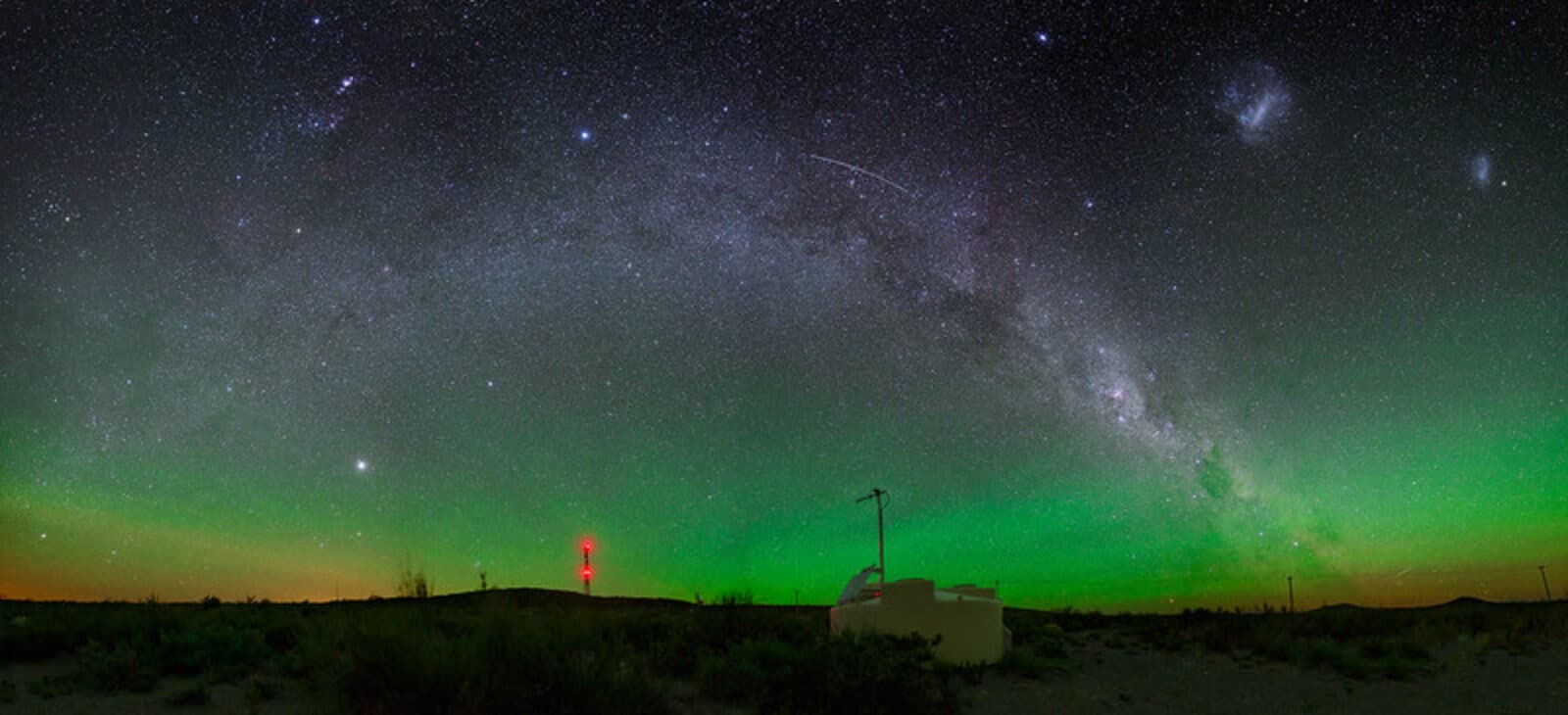The Most Powerful Particles in the Universe
by Adam Hadhazy
The Pierre Auger Observatory captures rare but unmistakable signals of ultra-high-energy cosmic rays

The Author
The Researcher
As astrophysical phenomena go, cosmic rays have an indisputably wonderful name, harkening back to cheesy 1950s sci-fi. You may be disappointed to learn, though, that the fetching moniker is a misnomer. Cosmic rays are in fact particles, typically protons or atomic nuclei.
The particular nature of cosmic rays, however, makes them extremely valuable to scientists. Cosmic rays are a unique form of information from the universe that reaches our planet, alongside light, particles called neutrinos, and gravitational waves. Each offers distinct insights into the way the universe and its constituents work.
Amidst the constant rain of cosmic rays from space, the most compelling are rare bolts from the blue known as ultra-high-energy cosmic rays, or UHECRs for short. The most energetic particles in the universe, UHECRs pack in ten million times more energy than the particles accelerated inside the Large Hadron Collider. The punch of a UHECR is equivalent to that of a baseball hurtling at 60 miles per hour—astonishingly conveyed in a mere mote the size of an atomic nucleus.
You need not worry about getting knocked upside the head by a UHECR, though. The particles smash into smithereens against the molecules in our atmosphere, sending a cascade of radiation down to the ground. Capturing these and other telltale signals is the mission of the premier hunter of UHECRs, the Pierre Auger Observatory. The collaboration behind Auger includes around 500 scientists from 100 institutions worldwide, including the Kavli Institute for Cosmological Physics based at the University of Chicago.
The observatory's main type of detector of cosmic ray-induced air showers is 1600 water tanks, spread out in a vast plain in Argentina covering 3000 square kilometers—an area approximately the size of Rhode Island. Such a vast area is necessary to gather enough UHECR events in order to say anything about the ultimate cosmic sources of these gobsmacking particles.
"The origin of these particles is one of the open questions in particle astrophysics," says Paolo Privitera, Professor in the Department of Astronomy and Astrophysics and the Department of Physics at UChicago and a KICP member. "Are they a signal of new physics, for example coming from the decay of superheavy dark matter? Or are they standard particles—protons or nuclei—boosted to unimaginable speed in gigantic astrophysical accelerators? Given their minute rate—less than one expected to land in a square mile per century—only a giant detector as the Pierre Auger Observatory could possibly answer these questions."
Privitera joined the budding Pierre Auger Observatory project in 1998, back when he was still a young researcher in Italy. He has gone on to make significant contributions to its design, construction, commissioning and operation, along with a major role in arriving at its scientific results to date.
Over its years of operation, the Observatory has helped narrow down the true sources of cosmic rays. It now seems highly likely they are produced in stellar explosions, called supernovae, and from the activity of supermassive black holes in hearts of galaxies, amongst other possible wellsprings.
"The Auger Observatory data impose tight constraints on 'new physics' explanations of UHECRs," says Privitera. "Most likely these particles are of astrophysical origin."
An ongoing upgrade to the detection systems at the Observatory will soon lead to a new phase dubbed AugerPrime. The water tanks are being enhanced with scintillation detectors on top of the water tanks, plus new sensors inside the tanks, as well as extending the operations of an atmospheric fluorescence detector above the array. AugerPrime will deepen our understanding of the composition of UHECRs (that is, whether they're protons or larger nuclei) as a function of their energy level. Other areas of inquiry will include an observed energy cut-off level for cosmic rays, likely related to interactions with the cosmic microwave background (the afterglow of the Big Bang), and further tracing of their enigmatic origins.
The novel coronavirus epidemic has stalled some of the Observatory's progress as of late. Non-essential activities at the Observatory were suspended for many weeks, including routine maintenance and assembly and deployment of the upgraded detectors. Privitera says that upwards of 80 water tanks have been offline, whereas normally about 30 might be down. But the staff is slowly getting back up to speed with appropriate measures in place, and the science will go on at Auger, as it has since the observatory's construction started in 2004.
Privitera jokingly recalls being convinced to leave sunny Rome for famously frigid Chicago to join KICP by the late James Cronin, a former KICP member and one of the founders of the Pierre Auger Observatory. Privitera has enjoyed frequent trips to the remote region of Argentina where the observatory sprawls. The experience working on the project has been a career-defining one. "I found in the exploratory nature of the experiment and in the enthusiasm of its leaders and the international collaboration an ideal place to grow as a scientist," says Privitera.